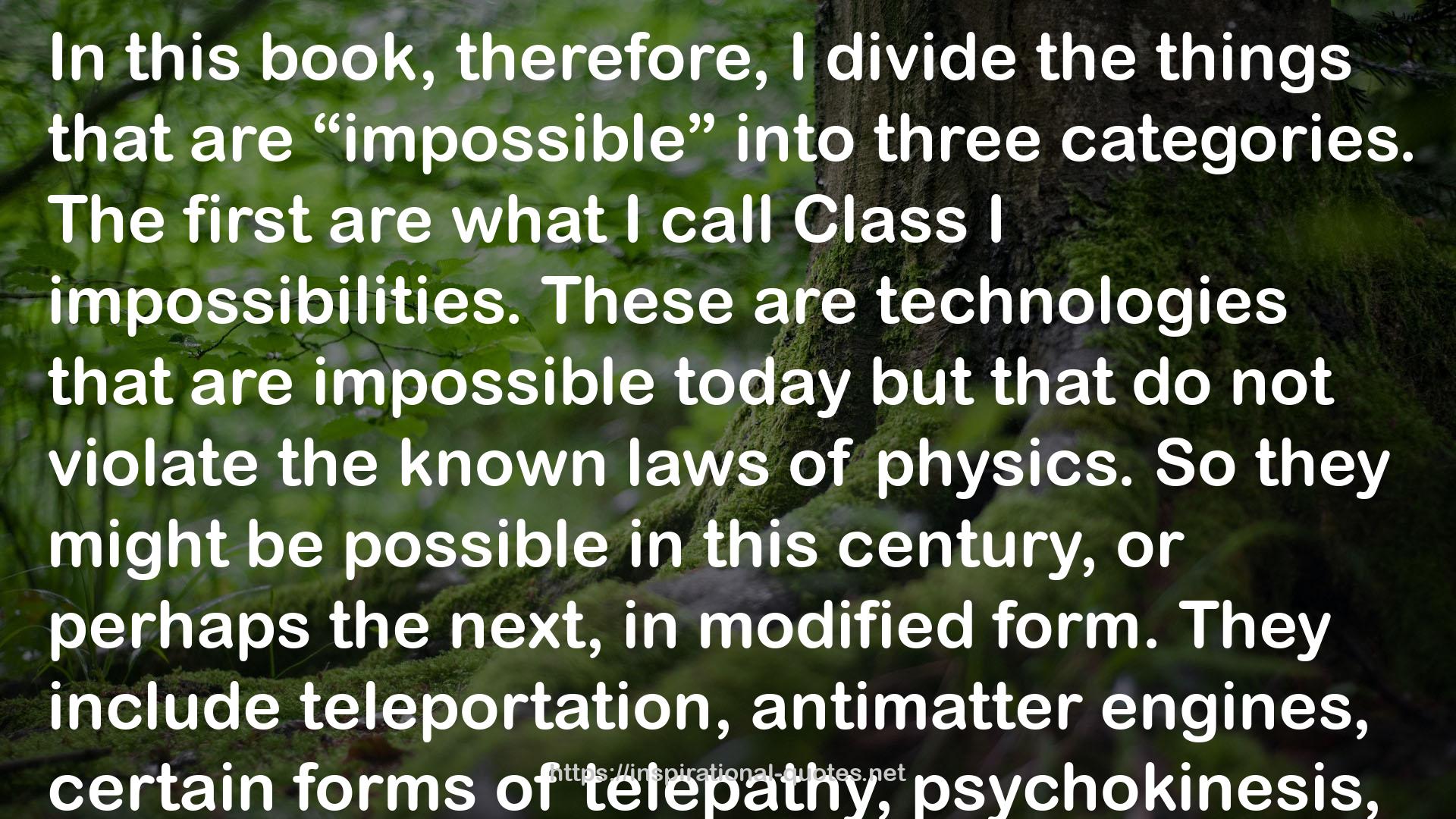" In this book, therefore, I divide the things that are “impossible” into three categories. The first are what I call Class I impossibilities. These are technologies that are impossible today but that do not violate the known laws of physics. So they might be possible in this century, or perhaps the next, in modified form. They include teleportation, antimatter engines, certain forms of telepathy, psychokinesis, and invisibility. The second category is what I term Class II impossibilities. These are technologies that sit at the very edge of our understanding of the physical world. If they are possible at all, they might be realized on a scale of millennia to millions of years in the future. They include time machines, the possibility of hyperspace travel, and travel through wormholes. The final category is what I call Class III impossibilities. These are technologies that violate the known laws of physics. Surprisingly, there are very few such impossible technologies. If they do turn out to be possible, they would represent a fundamental shift in our understanding of physics. "
― , Physics of the Impossible
